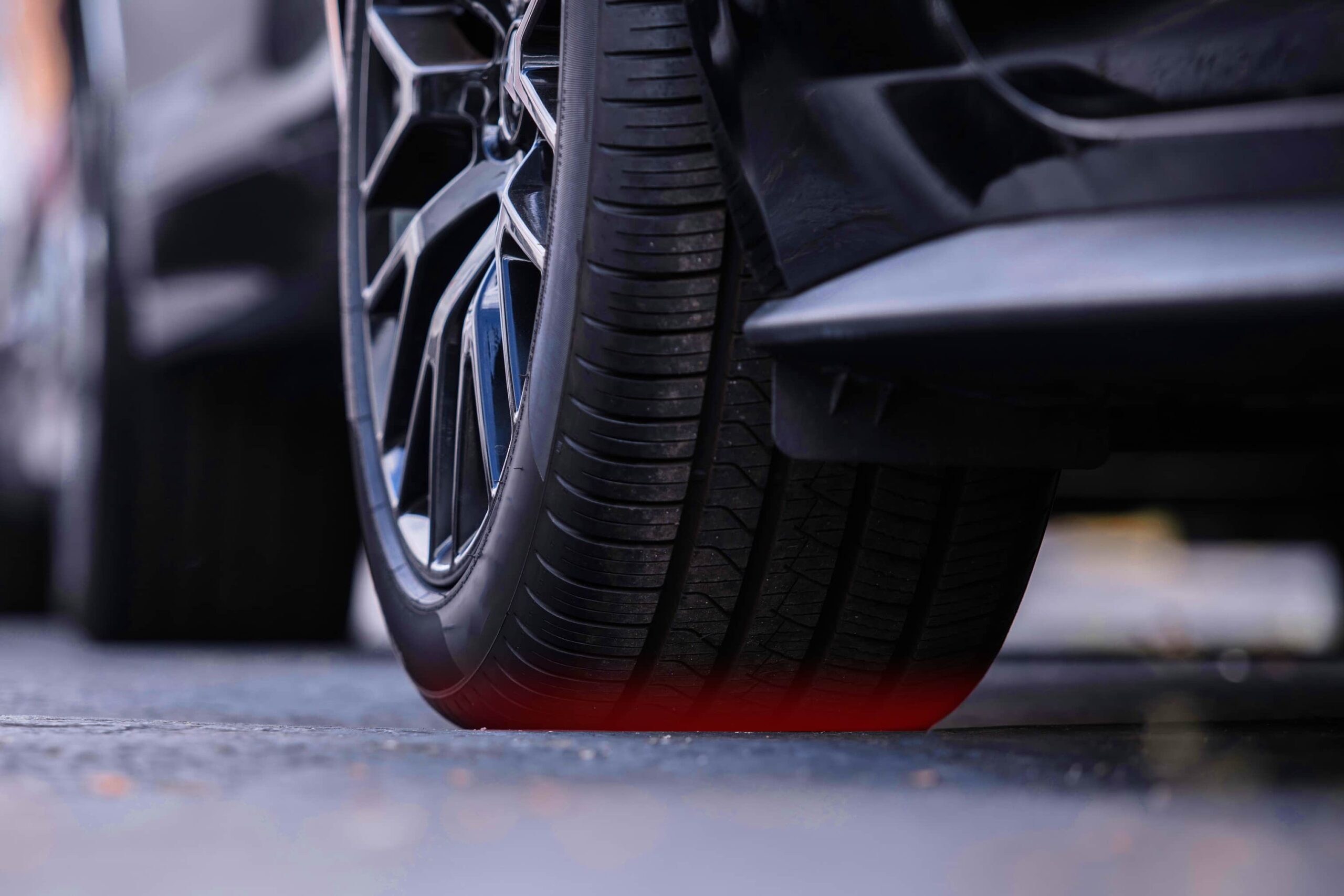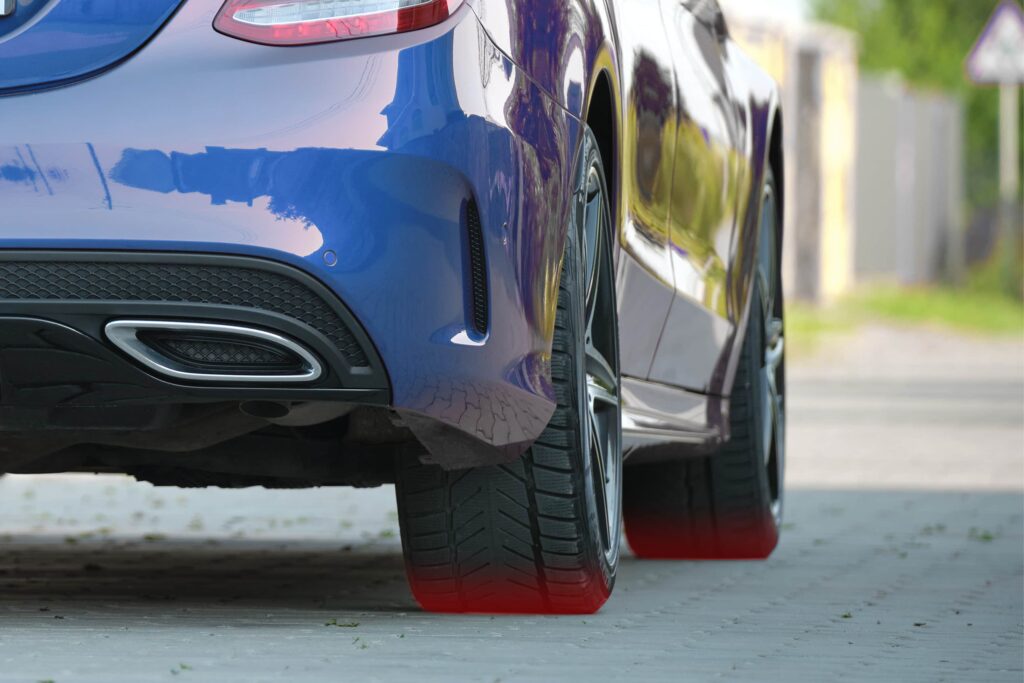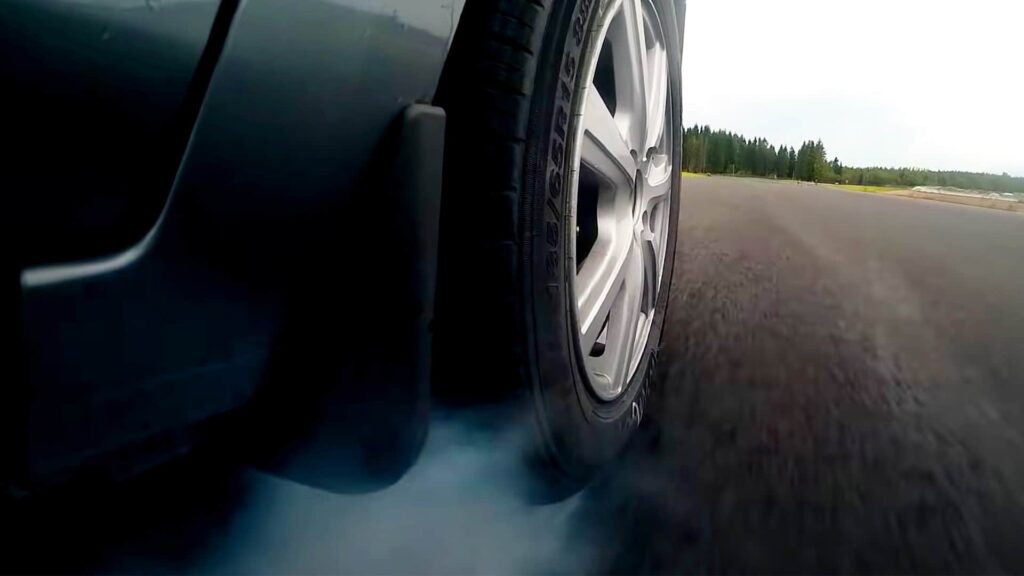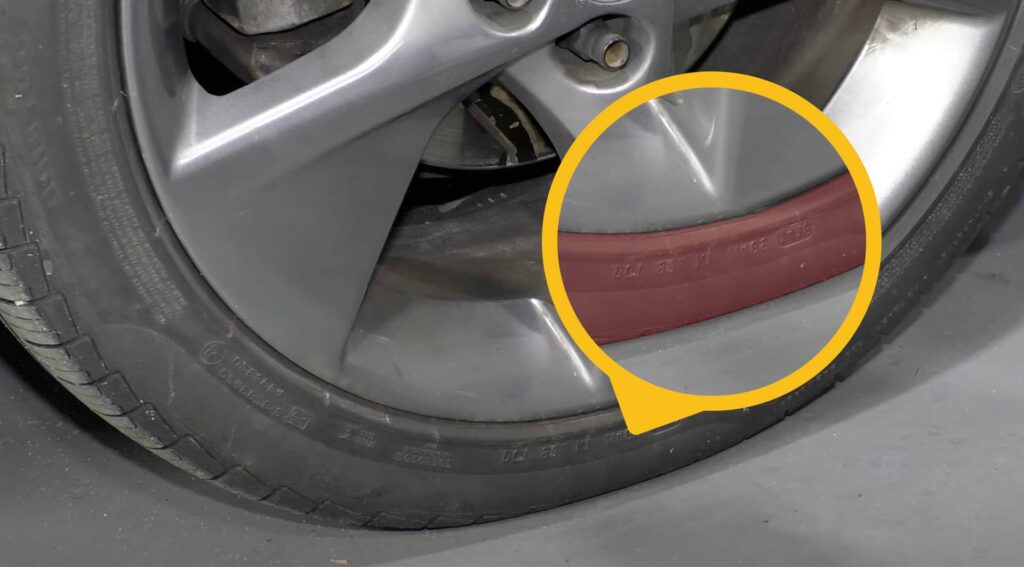Will Flat Spot On Tire Correct Itself? Most Probably Yes, But.

Flat spots on tires are a concern for many drivers, as they can cause discomfort and even pose safety risks. In this blog post, we’ll explore the causes of tire flat spotting, discuss whether a flat spot can correct itself over time, and provide valuable tips for prevention and care.
Understanding Flat Spots On Tires
Flat spots on tires occur when the tire comes into prolonged contact with the ground, causing a portion of its round shape to flatten. This can happen for various reasons, such as long-term parking or storage of a vehicle or exposure to cold weather conditions. Heavy braking and low tire pressure can also contribute to flat spotting.
Will Flat Spot On Tire Correct Itself Over Time?
If you are wondering if a flat spot on your tire can correct itself over time, there is good news and bad news. The bad news is that permanent flat spots cannot be corrected without replacing the tire; however, temporary flat spots can often repair themselves.
Temporary Flat Spots
Temporary flat spots are common occurrences when a vehicle has been stationary for a few days or weeks, causing the tire to develop an irregular shape due to the weight of the car pressing on one section.
These flat spots tend to be less severe than permanent ones and often resolve themselves as the tires warm up during driving. The heat generated from friction helps soften and redistribute the rubber back into its original rounded form.
Semi-Permanent Flat Spots

Semi-permanent flat spots occur when vehicles are parked for extended periods of a month or more.
The long standing times, especially in tandem with low tire pressure, can result in more severe flat-spotting that normal driving won’t remedy.
If you suspect that your tires have semi-permanent flat-spotting, you should contact your local tire specialist and they’ll guide you through the options on how to fix it.
Permanent Flat Spots

Permanent flat spots on tires are a result of aggressive braking with locked-up wheels.
These types of flat spots cannot be repaired or corrected by any means and require the replacement of the tire.
Related Reading: How To Prevent Flat Spots During Storage?
How to Get Rid of Flat Spots
Driving the vehicle is one of the most effective ways to get rid of flat spots on tires. Taking the car for a spin can help distribute the weight evenly across the tire and encourage it to regain its round shape.
It is recommended to drive the vehicle at a slow speed, preferably below 25 mph, for several miles to warm up the tires.
Timeframe For Self-Correction
The timeframe for the self-correction of a flat spot on a tire depends on various factors. Temporary flat spots can often correct themselves within the first few miles of driving.
Factors That Affect The Correction Process
Several factors can affect the correction process of flat spots on tires. These include:
Signs That A Flat Spot May Correct Itself

There are some signs to look out for that indicate the flat spot may correct itself over time. One such sign is if the tire still looks round, with no visible deformation or bulging.
Another sign to look out for is whether or not the tire gradually improves its driving performance as it heats up from driving. Increased heat in tires causes them to expand and return to their normal shape, so if your vehicle’s ride feels smoother after a few miles of use, then your tire could fix itself over time.
Is It Safe to Drive on a Tire with a Flat Spot?
It is not safe to drive on a tire with a flat spot as it can cause dangerous vibrations while driving and affect the vehicle's performance.
What Causes Flat Spots on Tires?
Flat spots are typically caused by long-term parking or storage, as well as cold weather that causes the tire to develop a temporary flat spot when it sits for an extended period.
Long-Term Parking
Leaving your vehicle parked or stored for an extended period can lead to flat spots on tires. This is because the weight of the car presses down on the tire’s contact patch, causing it to flatten out in that spot.
Cold Weather
Cold weather can be a major cause of flat spots on tires. When temperatures drop, the rubber in your tires hardens and becomes less flexible, which makes it more likely to develop flat spots.
For a more in-depth study on the causes of tire flat spots, please check the Firestone article.
How Long Can Tires Sit before They Get a Flat Spot?
Flat spots on tires can occur from sitting for a few days or even just overnight, but the length of time it takes for them to develop depends on various factors such as tire type, weather conditions, and vehicle weight.
Risks And Dangers Of Driving On A Tire With A Flat Spot
Flat spots on tires can have a significant impact on the performance of your vehicle.
Preventing Flat Spots On Tires
Conclusion And Additional Tips For Tire Care
In conclusion, flat spots on tires can be a serious issue that affects your vehicle’s performance and safety. Whether it is caused by long-term parking or storage, cold weather, or other factors, it is important to address the problem promptly.
While temporary flat spots may correct themselves over time with proper care and use, permanent damage requires tire replacement.
To prevent flat spotting from occurring in the first place, it is crucial to properly maintain your tires. This includes regular inspection for wear and tear, maintaining proper air pressure, and storing them correctly when not in use.
